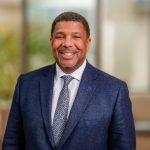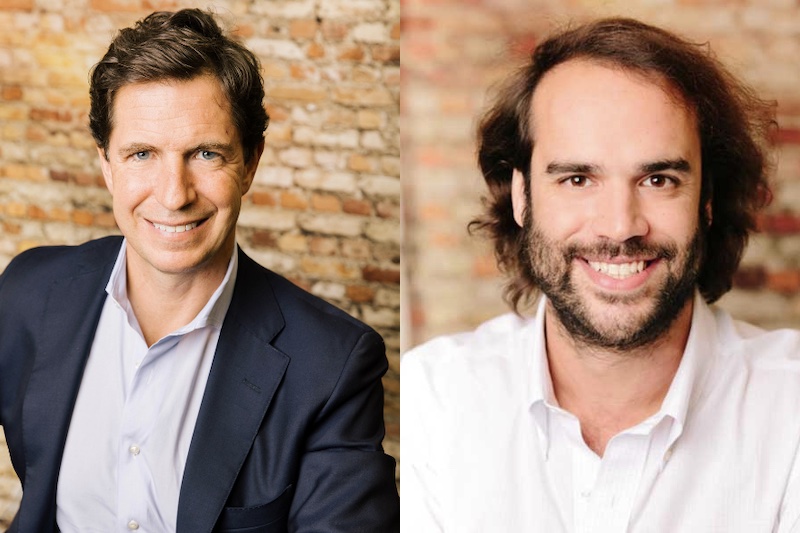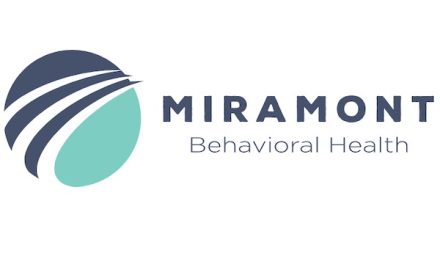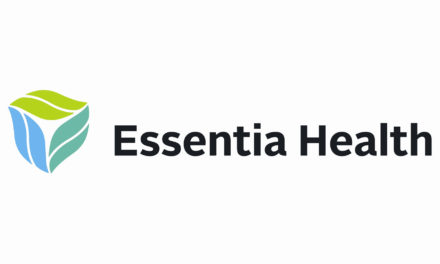
EnsoData leaders talk AI in healthcare, new FDA clearance

EnsoData, a Madison-based healthcare technology company, recently received a clearance from the Food and Drug Administration that its chief research officer called a “pivotal moment in sleep diagnostics.”
The company uses artificial intelligence and machine learning to aid with diagnosis and treatment.
The clearance allows for the pairing of EnsoData’s technology with pulse oximetry devices, which are simpler to wear and cheaper than the previous generations of sleep diagnostic equipment on which the company’s prior FDA clearances focused.
“Enabling AI analysis to measure sleep and aid in diagnosis of sleep-disordered breathing and sleep apnea on these widely available and inexpensive devices should be really transformative for patient access and outcomes,” said Chris Fernandez, co-founder and chief research officer at EnsoData.
The company’s platform has supported the diagnosis of more than 1.3 million patients. Its customer base includes more than 500 clinics in the country and leading health systems. Its team numbers more than 50.
CEO Justin Mortara said they’re on track to reach 100,000 patients monthly by the end of the year.
Mortara said pulse oximeter devices are ubiquitous, and they see an opportunity in the wearable technology space. That could allow the application of their work beyond traditional home sleep testing.
He called the clearance a “stepping stone” toward improving sleep for everyone.
“We’re excited,” Mortara said. “It comes down to making a difference in the world here — making healthcare better.”
Fernandez and Mortara spoke to Wisconsin Health News this week.
Edited excerpts are below.
WHN: How did you decide to focus on sleep medicine?
Fernandez: Sleep disorders represent some of the most undiagnosed, if perhaps the most undiagnosed diseases, on the planet. Sleep apnea is estimated to affect just shy of 1 billion patients worldwide, more than 930 million individuals. In the United States, that’s about 25 million individuals. Today, that population is estimated to be 80 to 90 percent undiagnosed and untreated.
When we think about the application of AI and machine learning, with one of the primary benefits being able to make things faster and more affordable, it seemed like a really powerful place to try to use that technology to actually increase the level of access, testing and treatment higher than it had been before. There’s a big gap still ahead of us.
WHN: How could this translate to other healthcare fields?
Fernandez: One of the things that is really exciting about the availability of this technology is that fundamentally what it’s doing is providing a very granular and accurate analysis that allows us to measure sleep and quantify sleep-disordered breathing. When we think about that pre- and post-treatment for a condition like sleep apnea, having that data allows us to measure very directly: Is this treatment helping the patient to sleep longer, achieve higher quality sleep, breathe better and ultimately show that that therapy is working well to treat the patient’s disease?
The most common sleep disorder is sleep apnea, and the most common therapy for that is CPAP (continuous positive airway pressure). But this universe of sleep disorders and therapies is much, much bigger. So what I think is most interesting is that those capabilities are not specific to sleep apnea. They’re not specific to CPAP therapy, oral appliance therapies or cognitive behavioral therapy that you might receive if you have insomnia or a combination of sleep disorders. Ultimately, this is, in its current incarnation, bigger than sleep apnea and bigger than any particular therapy modality.
There are natural bridges to other diseases too. But I think that as under-addressed as sleep is, taking the opportunity to help folks that have severe heart disease and other conditions to achieve the best sleep they can is a really big opportunity.
WHN: What role will AI play in healthcare?
Fernandez: We believe in the next 10 to 30 years that AI will be used to support every diagnostic and treatment decision that’s made in healthcare globally. It represents an opportunity to be more data-driven and evidence-and-outcomes-driven.
Mortara: We have a sleep narrative here, which you could then take to really any specialty. We talk about in the United States there being 6,000 sleep physicians. That’s not enough physicians to cover the population. So what do you do? If we give up, then people remain undiagnosed and untreated. If we apply AI, we are able to help reduce the burden for those clinicians, so their patient impact can ultimately be greater. So it’s reaching more patients. That’s really what AI, in our worldview, is doing. It’s not replacing the physician, but it’s empowering the physician to do more.
WHN: Policymakers are focusing on AI in healthcare. Do you see a need for further regulatory efforts?
Fernandez: We think the FDA has demonstrated a lot of leadership in helping to create guidelines for industry that can help to solidify best practices around the design, the development, testing of AI and medical devices, and have fostered the dissemination of information really well. They’ve been very collaborative with industry, sharing ideas and asking for input, which I think is a fabulous thing. We’re really pleased overall with how things are developing and evolving, and certainly expect more evolution to continue.
One thing that is helpful to continue to have as part of that conversation is standards around open data formats, data sharing, electronic health record connectivity, interoperability, those sorts of things, to be able to continue to tie that kind of data together and promote the sharing of that data.
WHN: What’s next for EnsoData?
Mortara: For us to really make a difference in healthcare and make healthcare better, we need to not only be supporting the diagnosis of patients, but also supporting the care pathway all the way through therapy. So connecting what we do with our AI in sleep diagnosis to what we can do with AI supporting patients on therapy — that is the growth path for the company. Because it’s not just about the undiagnosed, but it’s about once they are diagnosed, how can we help those patients stay on therapy and succeed with therapy, so that ultimately their health and their wellness improve, the cost to society is reduced, and we have this sense of accomplishment as a company and as a team.
This article first appeared in the Wisconsin Health News daily email newsletter. Sign up for your free trial here.





